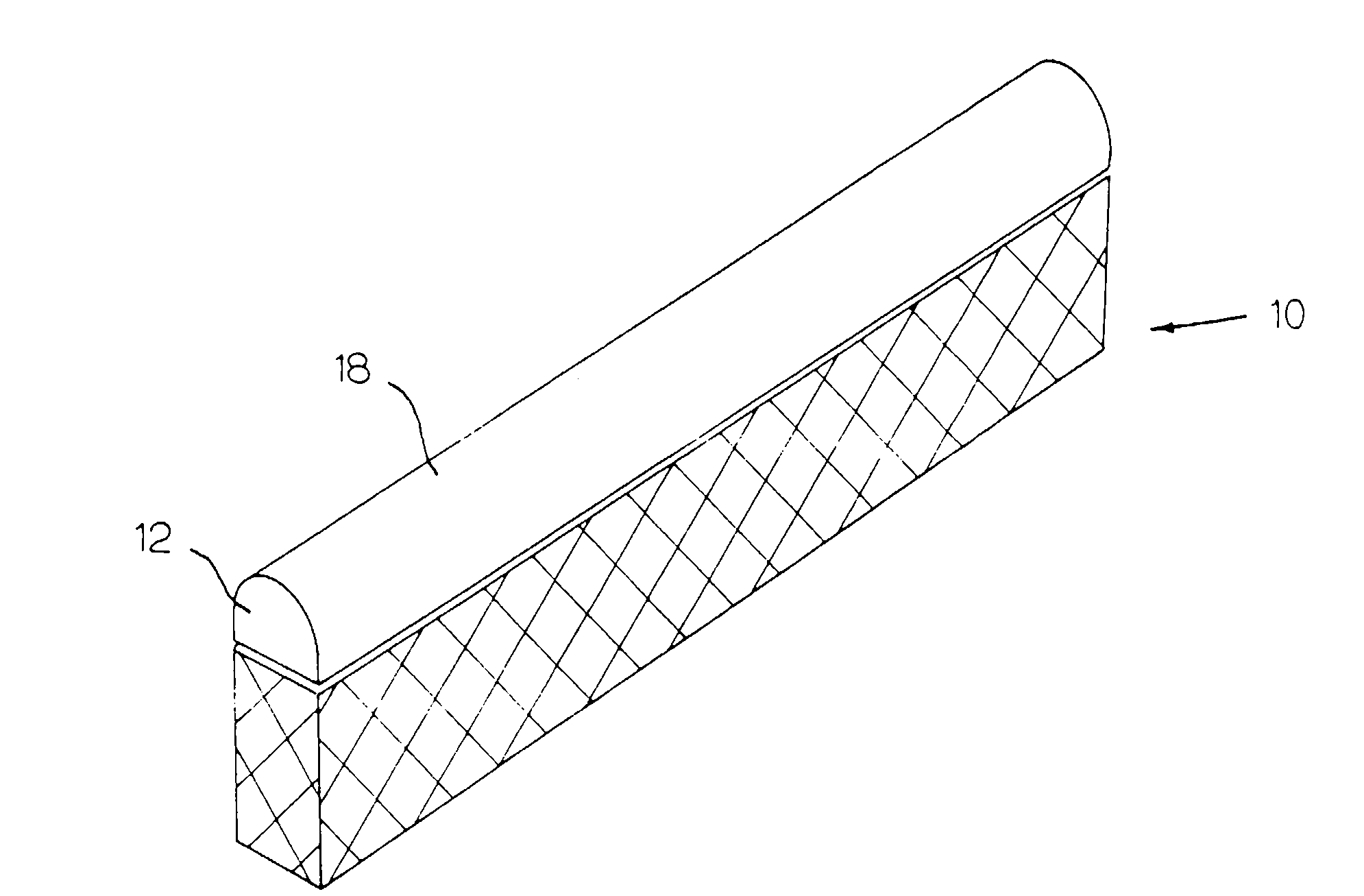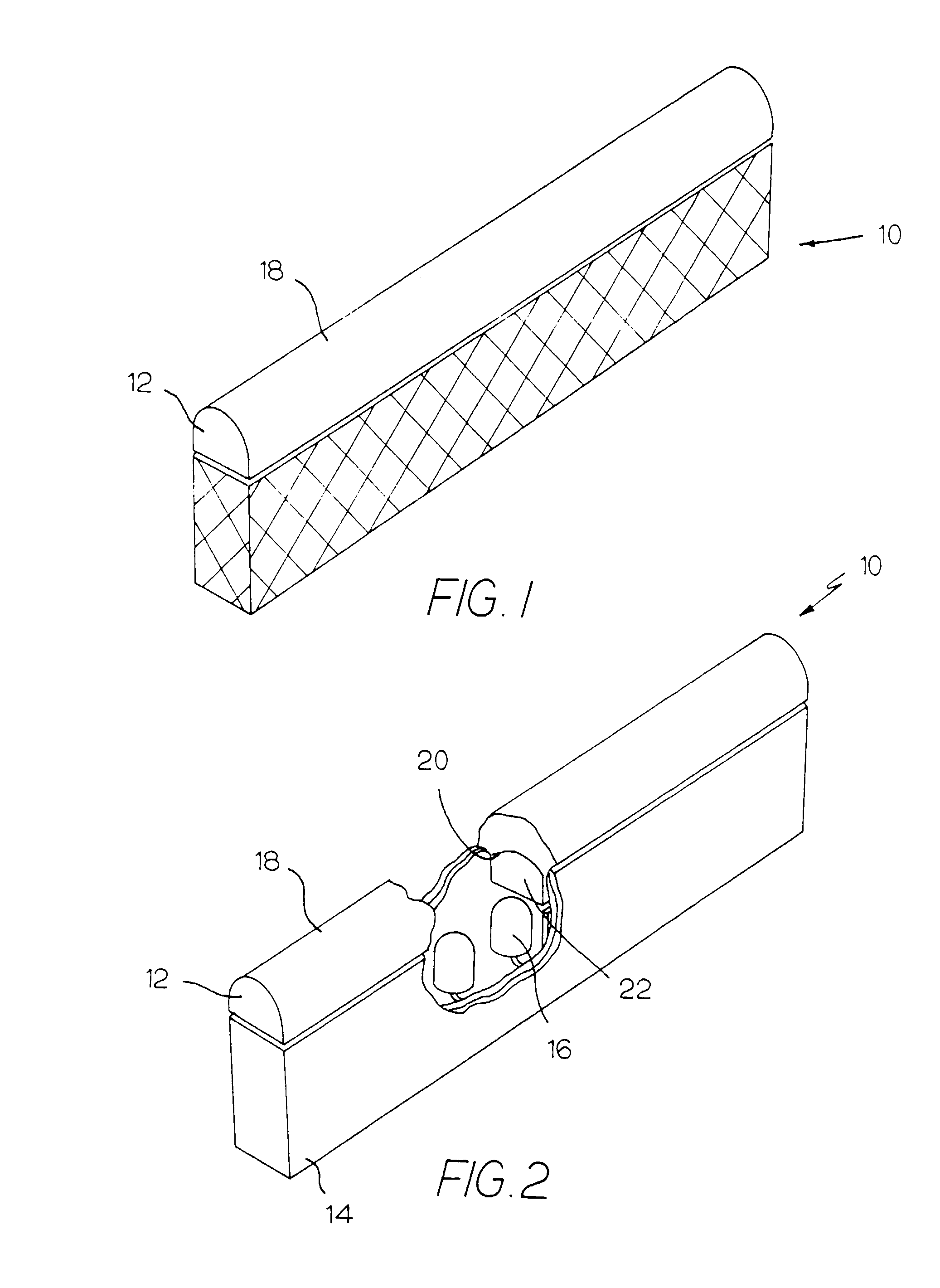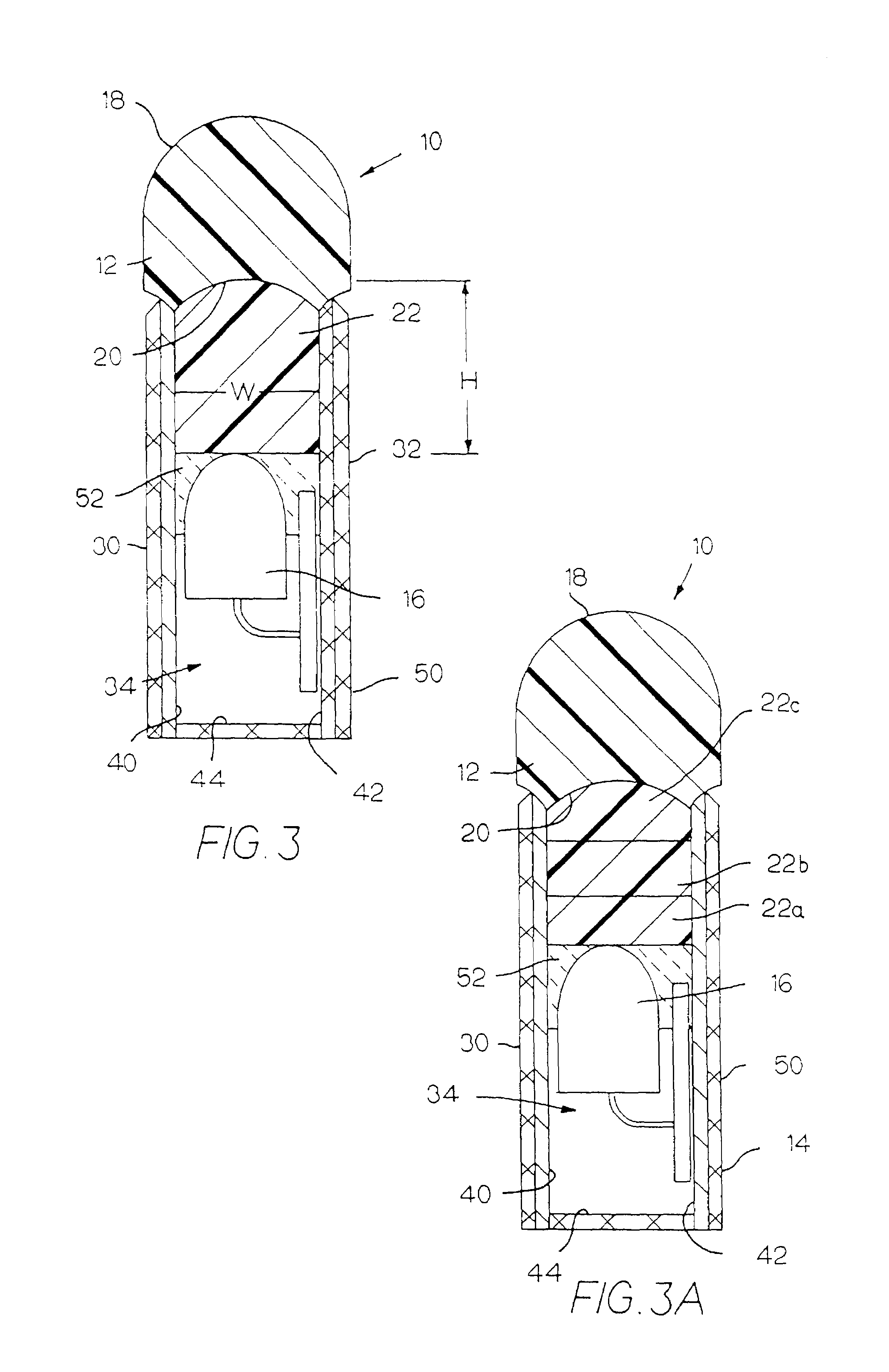Illumination device for simulating neon lighting through use of fluorescent dyes
a technology of illumination device and fluorescent dye, which is applied in the direction of lighting support device, lighting and heating apparatus, instruments, etc., can solve the problems of inconvenient initial handling, installation and/or replacement, and the cost of neon lighting is high, and achieves the effect of increasing the cost or complexity of the illumination devi
- Summary
- Abstract
- Description
- Claims
- Application Information
AI Technical Summary
Benefits of technology
Problems solved by technology
Method used
Image
Examples
example 1
[0038]In this first example, an illumination device 10 is constructed with a length L of approximately 4.75 inches and has a cross-section as shown in FIG. 3. The light source 16 is a string of nine contiguously mounted, high-intensity LEDs spaced at approximately 0.50-inch intervals. Furthermore and more importantly, the LEDs in the example are blue, emitting light with a wavelength of approximately 470 nm and having color coordinates of x≅0.111 and y≅0.058 on the CIE Chromaticity Diagram.
[0039]The LEDs are operated at approximately 20 mA. In order to simplify the manufacturing and assembly process, it is preferred that the LEDs be operated at a substantially constant current and power. However, by varying the current, the resultant perceived color may be affected.
[0040]Finally, referring again to FIG. 3, the intermediate light-transmitting medium 22 in this example has a height H of approximately 0.625 inches, a width W of approximately 0.375 inches, and a length essentially ident...
example 2
[0045]In this example, an illumination device 10 is constructed with a length L of approximately 4.625 inches and also has a cross-section similar to that shown in FIG. 3. The light source 16 is a string of nine contiguously mounted, high-intensity LEDs spaced at approximately 0.50-inch intervals and operated at approximately 20 mA. Furthermore, the LEDs in the example are again blue, emitting light with a wavelength of approximately 470 nm and having color coordinates of x≅0.111 and y≅0.058 on the CIE Chromaticity Diagram.
[0046]Referring again to FIG. 3, the intermediate light-transmitting medium 22 in this example has a height H of approximately 0.375 inches, a width W of approximately 0.1875 inches, and a length essentially identical to that of the illumination device, 4.625 inches. The intermediate light-transmitting medium 22 is composed of a substantially translucent polyurethane tinted with a combination of fluorescent dyes in the following proportions:
[0047]
TABLE 2Mass (g)Po...
example 3
[0049]In this example, an illumination device 10 is constructed with a length L of approximately 3.00 inches and also has a cross-section similar to that shown in FIG. 3. The light source 16 is a string of six contiguously mounted, high-intensity LEDs spaced at approximately 0.50-inch intervals and operated at approximately 20 mA. Furthermore, the LEDs in the example are again blue, emitting light with a wavelength of approximately 470 nm and having color coordinates of x≅0.111 and y≅0.058 on the CIE Chromaticity Diagram.
[0050]Referring again to FIG. 3, the intermediate light-transmitting medium 22 in this example has a height H of approximately 0.400 inches, a width W of approximately 0.1875 inches, and a length essentially identical to that of the illumination device, 3.00 inches. The intermediate light-transmitting medium 22 is composed of a substantially translucent polyurethane tinted with a combination of fluorescent dyes in the following proportions:
[0051]
TABLE 3Mass (g)Polyu...
PUM
 Login to View More
Login to View More Abstract
Description
Claims
Application Information
 Login to View More
Login to View More - R&D
- Intellectual Property
- Life Sciences
- Materials
- Tech Scout
- Unparalleled Data Quality
- Higher Quality Content
- 60% Fewer Hallucinations
Browse by: Latest US Patents, China's latest patents, Technical Efficacy Thesaurus, Application Domain, Technology Topic, Popular Technical Reports.
© 2025 PatSnap. All rights reserved.Legal|Privacy policy|Modern Slavery Act Transparency Statement|Sitemap|About US| Contact US: help@patsnap.com



